these indian designers and organizations are preserving ancient weaving arts, turning them into heirloom pieces

With roots in Rajasthan, this award-winning designer is based in Delhi . A graduate from NIFT Delhi, he introduced his own line of clothing in 1997, combining the modern with artisanal traditional crafts. His Ajrak prints on linen and handloom weaves in Ikat are housed in the permanent textile and apparel archives of the Victoria and Albert Museum in London.

I had seen his ikat sari collection many years back when he was showcasing them at ekaya in Delhi. The range included stoles as well. Ikat is an Indonesian word meaning to bind or knot. ‘This is a dyeing technique used to pattern textiles that employs resist dyeing on the yarns prior to dyeing and weaving the fabric’ and the USP of this is blurriness. Some fine examples of this technique are seen in Patola saris from Khambat, Gujarat. Sambalpuri double ikat weaving loom (Tanta) from Odisha is known as Odisha Ikat. Pochampally sari is made in a small village in Nalgonda district, Andhra Pradesh. The famous 200-year-old Puttapaka saris are made in Puttapaka village, Samsthan Narayanpuram mandal in Nalgonda district.
Inspired by the colours of India and in love with ikat, Singh said saris would never go out of fashion in India. The Indian woman still preferred this for all formal occasions. For his own brand, he has 20 dedicated craftsmen in Rajasthan. Some pieces are made in Gujarat too.

Founder of Tantuvi, she was awarded the ‘Nari Shakti Puraskar’ by the President of India on International Women’s Day in 2019 for work related to mental health. She is also a trustee of the Manotsav Foundation which is concerned with mental health.
Tantuvi started in 1998 and means weaver in Sanskrit. With around 100 weavers under the label, she works closely on her designs. The fabrics made under this label are ‘made in natural yarns of cotton and silk, its derivatives or in the combination of both’. There are many processes that happen before the spinning begins. And at least four hands are needed on the loom. “The weavers are given a share of the profits.”
“My mother created a National Institute specialising in Indology, Religion and Cultural Studies in Varanasi. That’s where I met the handloom weavers who were finding it very difficult to find buyers for their work in Karsi,” said Morarka at an exhibition showcasing saris and stoles in Delhi. On the power of handlooms, she cites an ages-old adage from the old timers in Varanasi, ‘when you wear a powerloom sari, it touches your body. But when you wear a handloom sari, you get goosebumps because it touches your soul’.

3. Gautam Gupta
A NIFT alumni, Gupta joined his mother Asha Gautam’s bridal label ‘Vinayak Couture’ in 2003, when he was in the 12th standard. Since then, the duo has promoted the traditional weaves of India, especially the saris. Gupta joined NIFT in 2010 and launched his own label, ‘Autre’ for western clothing, in 2011.
Promoting many weaves, including the Banarasi, Gupta said that he reveled in silk, motifs and colours of Varanasi. With a love for colours, the collection I saw was all shades of orange, green, pink and yellow.
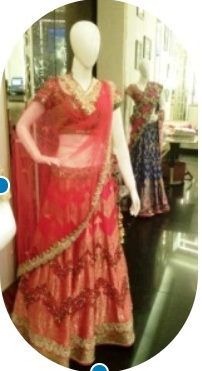
“We worked with the weavers in Varanasi to blend fabrics and bring out appealing textures and motifs. We use many fabrics such as silk, Banarsi tissue, kora, jute yarn with silk, slub yarn in silk, dupioni silk texture on organza, georgette with jute, and velvet appliqué on kora,” said Gupta. The highlights of the works are the intricate Petit point, Parsi Gara, Gota Dori and Zardozi embroideries. “Florals are the mainstay of Varanasi. But human figures and birds also woven in some pieces,” explained Gupta.
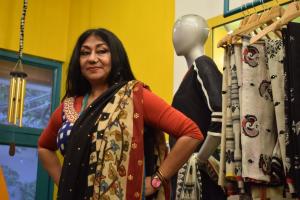
4. Anuradha Raman
I call her clothes ‘Bold And Beautiful’. For close to two decades, she has been working with weavers across the country to keep India’s craftsmanship alive. She works with weavers in Andhra Pradesh, West Bengal and Gujarat. Handwoven clothing, fusion of styles and crafts, her line is a blend for those who dressed to kill. “My woman has the balls to carry off yellows with greys,” said the designer. Kalamakari, mirror work, different embroideries, blocks, the work suits anyone who loves a riot of colours. She uses Tussar and Malda silks with tie-and-dye techniques from Pochampali, Chirala, and Puttupaka villages of Andhra Pradesh. The range has just about everything that a woman needs–saris, stoles, kurtas.
Not just her clothing, the brightness is seen in the decor of her store in Meherchand Market, Delhi, as well. Anuradha customises clothing, offers some great wearables for plus sizes too and all pieces are single creations. The store also houses #ethnic #jewellery and other accessories.
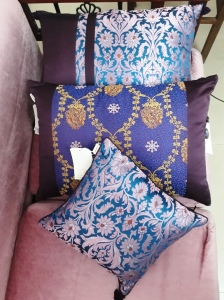
5. Aadyam Handwoven
A corporate social initiative by the Aditya Birla Group, this unit works with weavers in the regions of Bhuj, Varanasi and Pochampally. Not just saris and stoles, Aadyam offers home décor items such as cushions and curtains too. The aim is to preserve the ancient weaving techniques that filter down generations. The brand offers contemporary designs woven with looms and has opened new markets for these weaving communities.
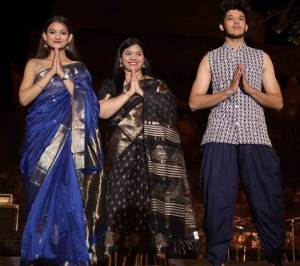
6. Maheshwari Creations
It was on January 1, 2020 that I met Seema Mishra, the founder of Maheshwari Creations. The occasion was Mandu Festival, obviously in Mandu, Madhya Pradesh. She had got along one of the master weavers, Hriday Ram, to showcase the popular Maheshwari saris. Ram had almost given up on work when Seema discovered him and other weavers in his community. “The beauty of this fabric is that it can be worn in all seasons and the sheerness just makes it suitable for all occasions,” explained Ram, who has traveled to many exhibitions across the country and has now taught the craft to his two daughters also. The saris are reversible and were originally 9 yards long.

The pilgrim town of Maheshwar, where the famous saris are made, is about an hour’s drive from Mandu. With a fort by the river Narmada, it was earlier called Mahishmati. The weaving of the saris was started by Maharani Ahilyabai Holkar, the 18th century ruler of Indore. Known as Devi Ahilyabai or Ma Saab, she invited many weaver communities from Mandu to settle in Maheshwar. They were then weaving this fine fabric for the Mughals. She gifted these textiles to her royal friends—the Peshwas. She encouraged the weavers to add motifs that were carved on the Maheshwar fort, besides the natural ones. Traditionally, the saris were made in peacock blue, yellow, green and red dye called Aal.
With 407 weavers, Maheshwari Creations is keeping the craft alive. And the 6-yard cotton yarn is among the most popular saris in India.

If you would like to share tales of ancient crafts with us, do comment below.
This blog post is part of #BlogchatterA2Z 2023 challenge.
Read previous posts A, B, C, D, E, F, G, H,

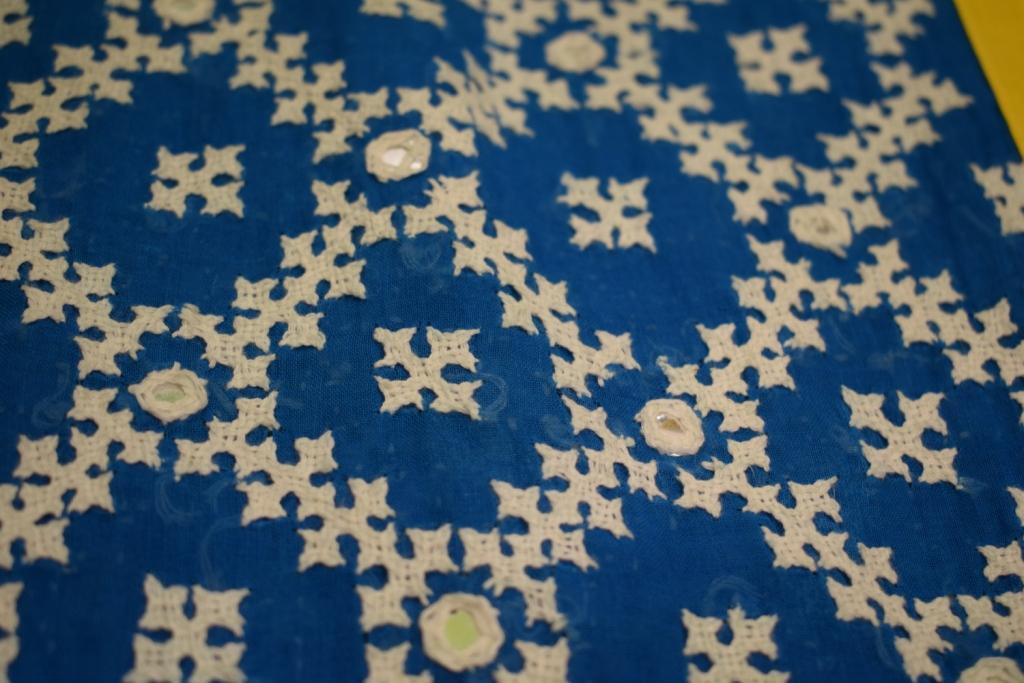
It is very important to keep our traditional weaves and textiles market alive… Loved the post! Glad to know about these designers.
LikeLiked by 1 person
So beautiful and happy to see our Indian traditional textile are explored so much with so well known designers with beautiful work on Indian fashion ❤
LikeLiked by 1 person
It is really heartening and inspiring to read about the stories of the people who are working to keep alive the traditional Indian textiles. It is also great to see them injecting new life into the traditional weaves with new-age innovations and designs.
LikeLiked by 1 person
Yes. It’s good to see the crafts living on.
LikeLike
It is so good to know that these designers are focused on keeping our traditions alive. We need such thoughts now.
LikeLiked by 1 person
Again a lovely blog post. I love the research done here. You have given me goals for creating blog posts.
LikeLiked by 1 person
Wow such awesome list of designers. I love traditional textiles and would love to have a look at these designs and buy some of them if I can. Thank you for this lovely list.
LikeLike
What a detailed and inspiring post. Loved how each one of them is dedicated to preserve and promote their art.
LikeLiked by 1 person